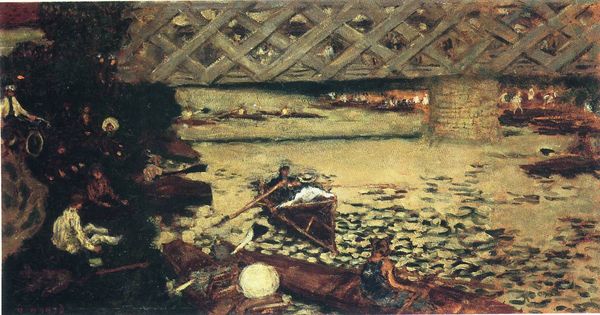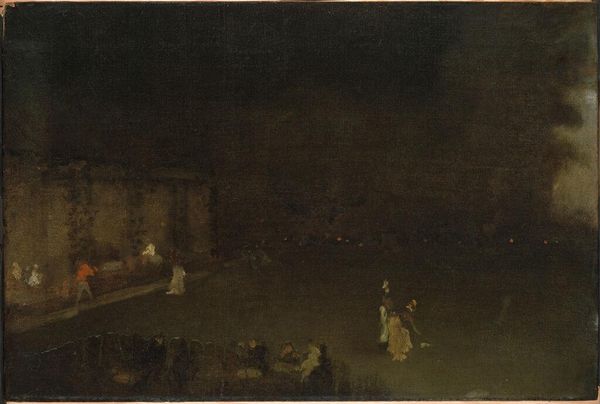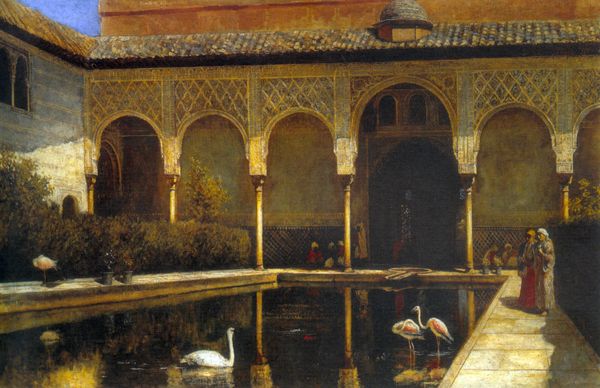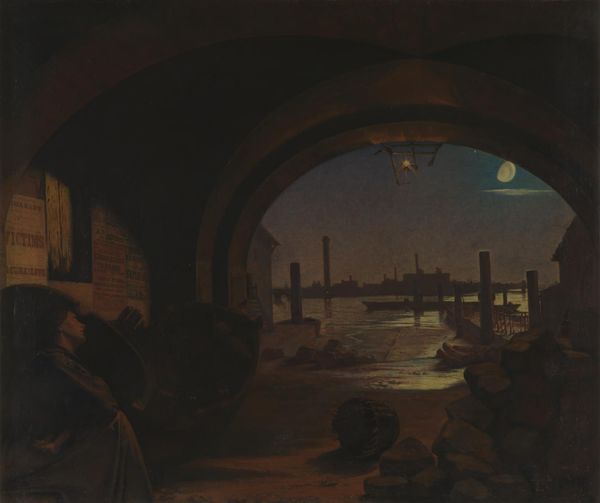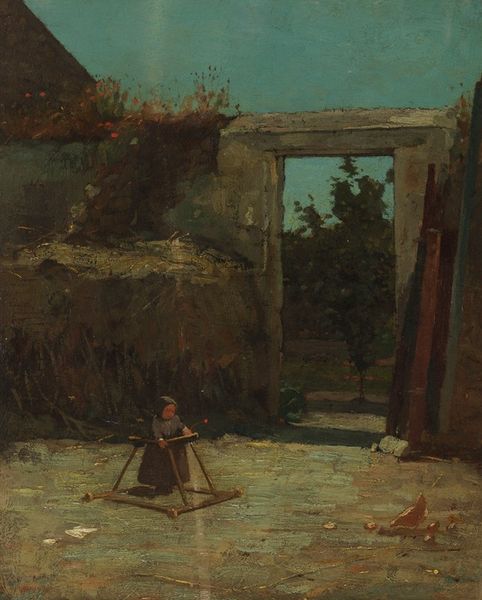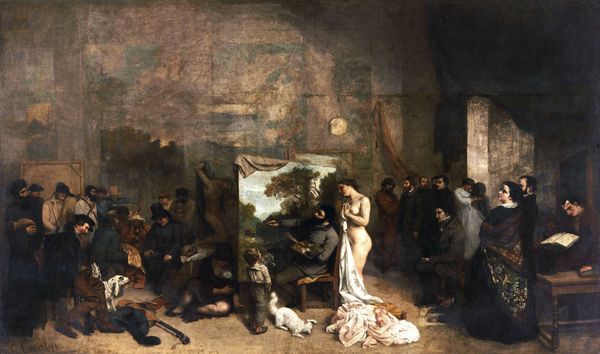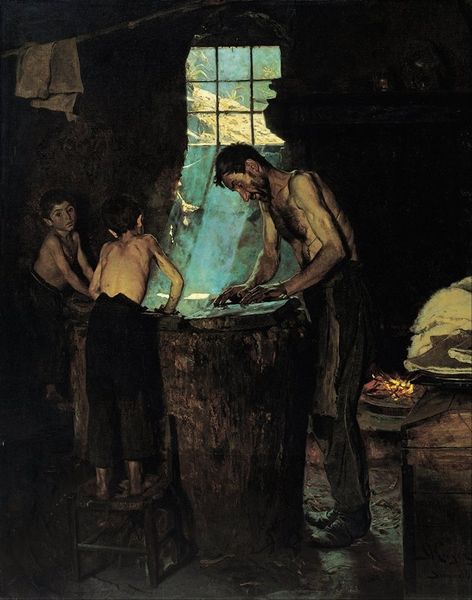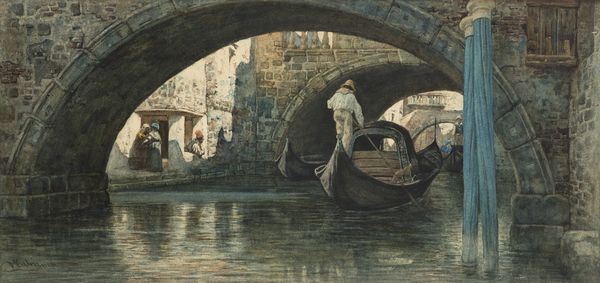
Copyright: Public Domain: Artvee
Editor: Here we have John Singer Sargent's "The Rialto, Venice" from 1911, executed in oil paint. I'm immediately struck by how the heavy shadow of the bridge contrasts with the sunlit buildings; it almost feels like a stage set. What do you see in this piece? Curator: What strikes me is the use of light and shadow as a symbolic representation of the known and the unknown. The figures bathed in light feel immediate, almost present, while those shrouded in shadow are distant, perhaps representative of forgotten histories, or secrets the city holds. The gondolas themselves, dark and sleek, remind me of funerary barges carrying souls between worlds. Editor: Funerary barges? That’s a bit dark, isn’t it? Curator: Consider Venice's history: a Republic built on trade and intrigue, secrets whispered in canals. Sargent wasn't merely painting a pretty picture, but perhaps capturing something deeper. Look at the gondoliers, their attire. What stories do they tell? What role do they play within the floating theatre of Venice? Their image continues, does it not? What cultural echoes does it ignite? Editor: I guess I was focusing more on the Impressionistic brushstrokes and the lovely, shimmering water. Curator: And that shimmering water reflects, distorts, and obscures. It is a veil, much like the symbols we use to both reveal and conceal. Even the quick, loose brushwork—doesn’t it feel like a fleeting glimpse, a memory half-formed? Editor: I see what you mean about the symbolism now. It's less a straightforward snapshot and more about the layers of meaning Venice carries. Curator: Exactly! And how the artist chose to reveal or conceal those layers speaks volumes about our enduring fascination with this city. Editor: I’ll never look at a Venetian cityscape the same way again. Thank you.
Comments
No comments
Be the first to comment and join the conversation on the ultimate creative platform.



